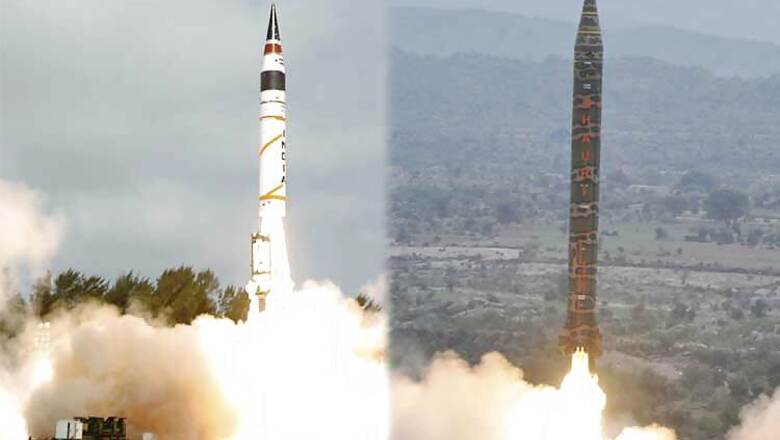
views
Pakistan has already managed to partially bridge the conventional military disadvantage with respect to India by going nuclear and now it is building nuclear weapons at the fastest rate in the world. The Pakistani defence forces have around 120 nuclear warheads, the Indian military on the other hand has 100 nuclear warheads in its arsenal.
According to the US think tank Stimson Center and Carnegie Endowment for International Peace, Pakistan has worked hard and successfully to build diverse nuclear capabilities. Given the current level of fissile material production, Pakistan can assemble between 14 and 27 nuclear weapons per year, whereas India can build between two and five nuclear weapons per year. So the report states that Pakistan is outcompeting India in fissile material for nuclear weapons by about four to one.
So in the next five to 10 years Pakistan could have a nuclear arsenal not only twice the size of India’s but also larger than those of the United Kingdom, China, and France, giving it the third-largest arsenal behind the United States and Russia. Many observers have concluded that Pakistan’s rate of fissile material production (and assumed construction of nuclear weapons) gives it the fastest-growing nuclear weapons stockpile.
"Pakistan is now competing successfully with — and in some respects is outcompeting — India. Pakistan operates four plutonium production reactors; India operates one. Pakistan has the capability to produce perhaps 20 nuclear warheads annually; India appears to be producing about five warheads annually," a report by Toby Dalton and Michael Krepon for Stimson Center and Carnegie Endowment for International Peace says.
However, the authors point out that India has a larger economy and sizable nuclear infrastructure, and can outcompete Pakistan in fissile material and warhead production if it chooses to do so. But Pakistan has prepared for this eventuality, too, by investing in a large nuclear weapons production complex.
The report quotes a New York Times editorial on April 6, 2015 which exemplified these concerns in stating that the “Pakistani Army’s continuing obsession with India as the enemy" and “Pakistan’s determination to continue developing short-range tactical nuclear weapons whose only purpose is use on the battlefield in a war against India" are dangerous.9 "e editorial concludes that “Pakistan, with the world’s fastest-growing nuclear arsenal, is unquestionably the biggest concern" in South Asia.
The report also underlines the perils of a weak economy for Pakistan. "Whether New Delhi chooses to compete more intensely or not, it is a losing proposition for Pakistan to sustain, let alone expand, its current infrastructure to produce greater numbers of nuclear weapons and their means of delivery. Just as the Soviet Union’s large nuclear arsenal was of no help whatsoever for its manifold economic and societal weaknesses, Pakistan’s nuclear weapons do not address its internal challenges," the report says.
While India has entered into a civil nuclear deal with the United States of America largely because of its clean track record in dealing with fissile material and better economic strength, Pakistan lacks both the commercial leverage and support for such an agreement.
Both India and Pakistan declared themselves a nuclear power with a series of tests in May 1998. While India had conducted its first nuclear test in 1974 and its entire programme is indigenous, Pakistan has been helped by North Korea and China.
India after becoming a nuclear power declared that it will not use nuclear weapons in a war unless it is attacked by one, Pakistan has stated time and again that it will have no compulsions in using such weapons first.
Read the full report below:




















Comments
0 comment